
eLight
metrics 2024
Illuminating the Future of Atomic and Molecular Physics
Introduction
eLight is a leading academic journal published by SPRINGER NATURE, dedicated to the dynamic field of Atomic and Molecular Physics, as well as Electronic, Optical, and Magnetic Materials. Launched in 2021, the journal has quickly established itself as a reputable source of cutting-edge research, evidenced by its impressive Q1 quartile rankings in both categories for 2023, alongside remarkable Scopus rankings that place it in the top 2% of its fields. With a commitment to advancing knowledge and fostering innovation, eLight invites contributions from researchers, professionals, and students who are passionate about exploring new frontiers in these critical areas of study. Hitting a critical intersection of physics and materials science, the journal provides an open forum for the dissemination of experimental findings, theoretical studies, and application-based research, ensuring accessibility to vital discoveries that drive progress in technology and academia. Located in Singapore, eLight is poised to make significant contributions to the scientific community until at least 2024, and beyond.
Metrics 2024
 8.65
8.65 27.20
27.20 27.20
27.20 22
22Metrics History
Rank 2024
Scopus
IF (Web Of Science)
JCI (Web Of Science)
Quartile History
Similar Journals
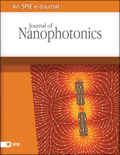
Journal of Nanophotonics
Exploring the Nanoscopic World of Light and MatterThe Journal of Nanophotonics, published by SPIE-SOC Photo-Optical Instrumentation Engineers, is an esteemed platform dedicated to advancing the field of nanotechnology through pioneering research in photonics. Since its inception in 2007, this journal has become instrumental in disseminating innovative findings and fostering collaborative discussions, especially in the domains of Condensed Matter Physics, Electronic, Optical and Magnetic Materials, and Nanoscience and Nanotechnology. Currently ranked within the Q3 category across these fields, it serves as a vital resource for academics, industry professionals, and students keen on exploring the multifaceted applications and implications of nanophotonic technologies. With its convergence set to continue until 2024, the journal offers a non-open-access model, ensuring rigorous peer-review standards and high-quality publications that contribute to the global body of knowledge.

Optics is a pioneering open access journal published by MDPI, dedicated to advancing the field of optics and photonics. Since its inception in 2020, the journal has fostered the dissemination of high-quality research and innovative developments in optical sciences, contributing significantly to its community of researchers, professionals, and students in Switzerland and beyond. With an impact factor reflective of its growing prominence, Optics strives to address a diverse scope, encompassing atomic and molecular physics, electronic materials, and broader topics in physics and astronomy. The journal's commitment to open access ensures that cutting-edge research is freely available, promoting collaboration and knowledge-sharing across disciplines. As of 2023, it holds a Q4 ranking in several categories, including Atomic and Molecular Physics, and Optics, which illustrates its evolving role in the academic landscape, positioning it as a valuable resource for those seeking to explore the frontiers of optical technology and its applications.

Photonics, an esteemed journal published by MDPI, is a leading platform for researchers in the fields of atomic and molecular physics, optics, and instrumentation. Since its inception in 2014, the journal has fostered open access to cutting-edge research, facilitating knowledge dissemination in these dynamic disciplines. With its Q2 ranking in the 2023 Scopus metrics for various categories, including radiology, nuclear medicine, and imaging, Photonics represents a crucial academic resource for professionals and students seeking to advance their understanding and expertise. Located in Basel, Switzerland, the journal plays a pivotal role in bridging theoretical and practical approaches to photonic technologies. Researchers are encouraged to contribute their findings, thereby enriching the journal’s impact and relevance in the global scientific community through collaboration and innovation.
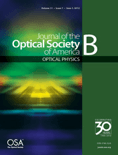
JOURNAL OF THE OPTICAL SOCIETY OF AMERICA B-OPTICAL PHYSICS
Pioneering Insights in Atomic and Molecular PhysicsJOURNAL OF THE OPTICAL SOCIETY OF AMERICA B-OPTICAL PHYSICS, published by Optica Publishing Group, serves as a leading platform for groundbreaking research in the fields of optical physics, atomic and molecular physics, and statistical and nonlinear physics. With an ISSN of 0740-3224 and an E-ISSN of 1520-8540, this esteemed journal has been in circulation since 1984 and is dedicated to advancing the understanding of optical phenomena and related technologies. It holds a commendable position in the academic community, with a 2023 Scopus ranking reflecting its significance—placing it in the top quartile for both Atomic and Molecular Physics and Statistical and Nonlinear Physics. Although it is not an open-access publication, it provides extensive access options to ensure that research is disseminated effectively within the scientific community. This journal is instrumental for researchers, professionals, and students alike, aiming to keep them informed of the latest advancements and trends in optical science. With a convergence of expertise and innovation, JOSA B continues to play a pivotal role in shaping the future of optical research.

Optoelectronics Letters
Illuminating the Future of OptoelectronicsOptoelectronics Letters, published by Tianjin University of Technology, is an esteemed platform for the dissemination of innovative research within the fields of atomic and molecular physics, optics, condensed matter physics, and electrical engineering. With its inaugural publication in 2007 and a convergence period extending to 2024, this journal aims to foster scholarly communication and collaboration among researchers and professionals. Although currently lacking an impact factor, it serves a vital niche in the rapidly evolving field of optoelectronics, evidenced by its categorization in the fourth quartile for various physics disciplines and the third quartile in electrical and electronic engineering. Given its ranking dynamics in Scopus, it is an emerging choice for authors seeking to convey their findings on electronic, optical, and magnetic materials. Researchers, students, and industry professionals alike can benefit from its open access options, encouraging a broad dissemination of cutting-edge knowledge that is essential in the advancement of technology and materials science.

OSA Continuum
Fostering Innovation Across Disciplines in OpticsOSA Continuum, published by the Optica Publishing Group, is a distinguished open access journal dedicated to advancing research in the realms of Atomic and Molecular Physics, Optics, and Electronic and Electrical Engineering. Since its inception in 2018, this journal has rapidly positioned itself as a significant platform for disseminating cutting-edge findings, achieving impressive Scopus rankings with a 61st percentile in Electrical and Electronic Engineering and 57th in Atomic and Molecular Physics. Based in the United States, the journal not only promotes scholarly dialogue among researchers and professionals but also plays a crucial role in bridging theoretical advances with practical applications in optical and material sciences. Its open access format ensures broader visibility and accessibility of research outputs, fostering innovation and collaboration across disciplines. With its ongoing commitment to excellence, OSA Continuum is crucial for anyone involved in these dynamic fields.
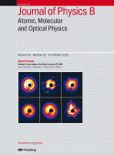
JOURNAL OF PHYSICS B-ATOMIC MOLECULAR AND OPTICAL PHYSICS
Pioneering Discoveries in the Realm of Atoms and MoleculesJOURNAL OF PHYSICS B-ATOMIC MOLECULAR AND OPTICAL PHYSICS, published by IOP Publishing Ltd, stands as a key platform within the fields of atomic, molecular, and optical physics. With an impressive history spanning from 1988 to 2024, this journal is recognized for its high-quality research contributions, holding a Q2 ranking in both Atomic and Molecular Physics and Optics, and Condensed Matter Physics, as of 2023. While not an open-access journal, it continues to attract a broad readership and submissions due to its commitment to disseminating knowledge that is at the forefront of contemporary physics research. The journal's ISSN 0953-4075 and E-ISSN 1361-6455 signal its accessibility and relevance in academic discourse. As researchers, professionals, and students delve into the intricate phenomena of quantum mechanics and photonics, they will find pivotal studies and insights within these pages, reinforcing JOURNAL OF PHYSICS B's stature as an esteemed resource in the ever-evolving landscape of physics.
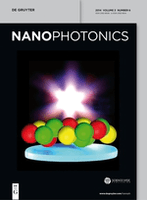
Nanophotonics
Unleashing the Power of Light at the NanoscaleNanophotonics, published by WALTER DE GRUYTER GMBH, is a premier open access journal dedicated to advancing the field of nanophotonics, encompassing cutting-edge research in atomic and molecular physics, optics, biotechnology, and electronic engineering. With a significant impact factor and a notable presence in the top quartile rankings (Q1) across multiple categories, including electrical and electronic engineering, this journal serves as a critical resource for researchers and professionals aiming to explore the latest developments in the manipulation of light at the nanoscale. Since its inception in 2012, Nanophotonics has been an influential platform for disseminating innovative ideas and breakthroughs, offering unrestricted access to its content, thus fostering a collaborative environment conducive to scientific discovery. Located in Berlin, Germany, and with a commitment to promoting the highest standard of scholarly excellence, Nanophotonics continues to shape the future of optical materials and technology, inviting contributions from both established experts and emerging scholars.

Chinese Optics
Pioneering Discoveries in the Realm of Optical Sciences.Chinese Optics is a premier journal dedicated to advancing the field of optics, encompassing research on atomic and molecular physics. Published by the esteemed Changchun Institute of Optics Fine Mechanics & Physics in China, this journal supports the sharing of cutting-edge findings since its inception in 2010. With an ISSN of 2097-1842, it operates within a competitive landscape, currently positioned in Q3 of the category for Atomic and Molecular Physics and Optics, according to the 2023 metrics. While the journal is not open access, it offers a valuable platform for researchers, professionals, and students to explore and contribute to significant discoveries in the realm of optics and light technology. By fostering scholarly communication, Chinese Optics plays a crucial role in bridging theoretical and practical aspects, making it an indispensable resource for those passionate about the optical sciences.
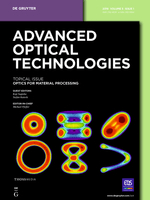
Advanced Optical Technologies
Shaping Tomorrow's Optical Technologies TodayAdvanced Optical Technologies is a reputable journal dedicated to advancing the field of optics and photonics, published by FRONTIERS MEDIA SA in Switzerland. Since its inception in 2012, the journal has made significant contributions to the domains of Atomic and Molecular Physics, Electronic, Optical and Magnetic Materials, and Instrumentation, achieving commendable rankings within these categories, including a Q2 quartile classification in 2023. With an emphasis on open access, Advanced Optical Technologies aims to facilitate the rapid dissemination of research findings, thereby fostering collaboration and innovation among researchers, professionals, and students alike. The journal serves as an essential platform for cutting-edge research articles, reviews, and technical notes, and its commitment to quality is reflected in its robust Scopus rankings. As the field of optical technologies continues to expand, this journal plays a crucial role in highlighting pivotal advancements and promoting interdisciplinary dialogue among scholars in the scientific community.